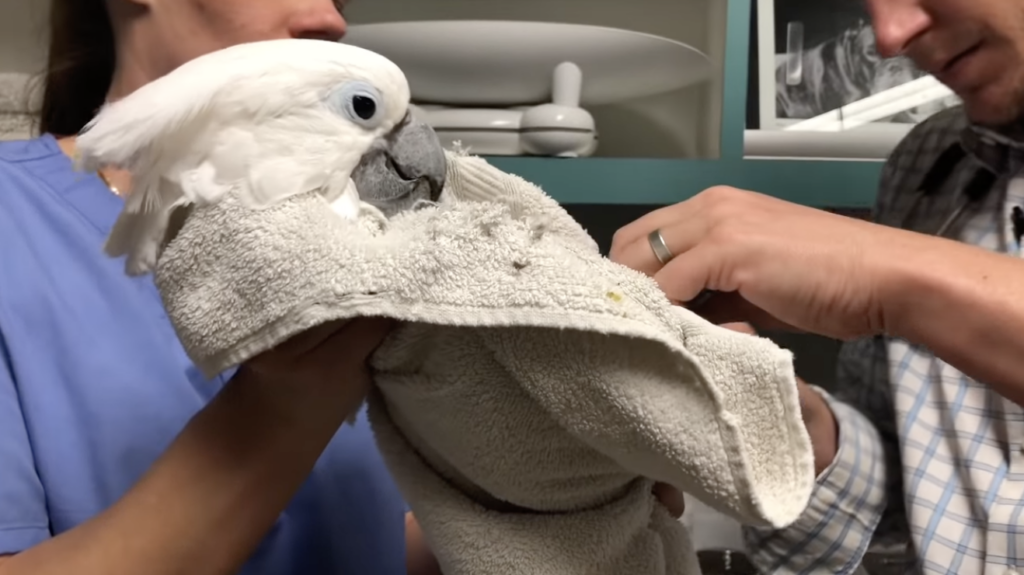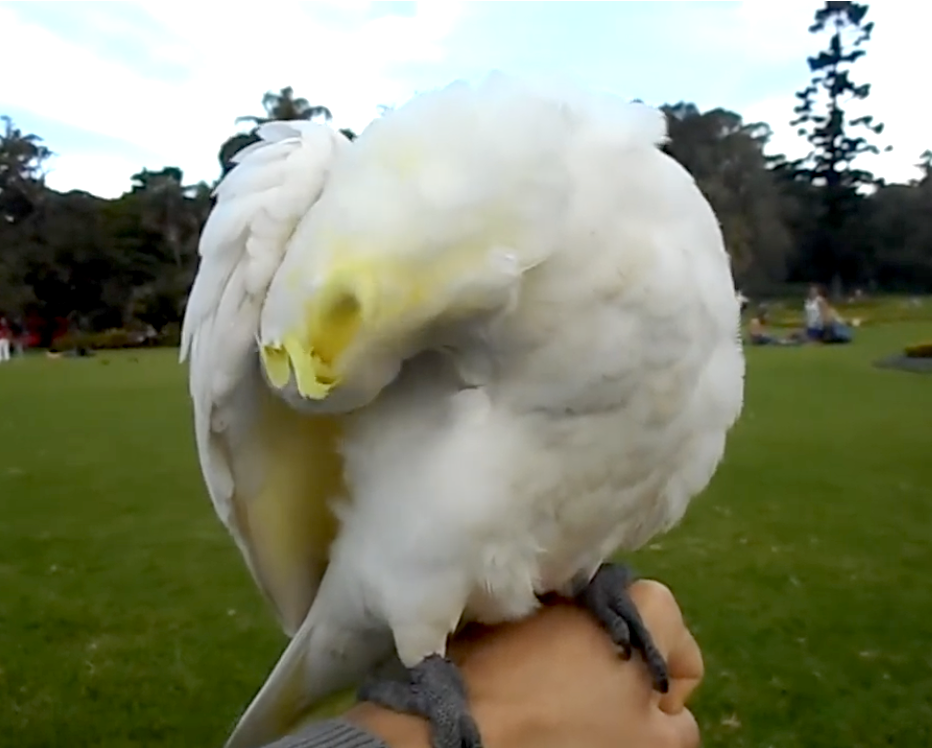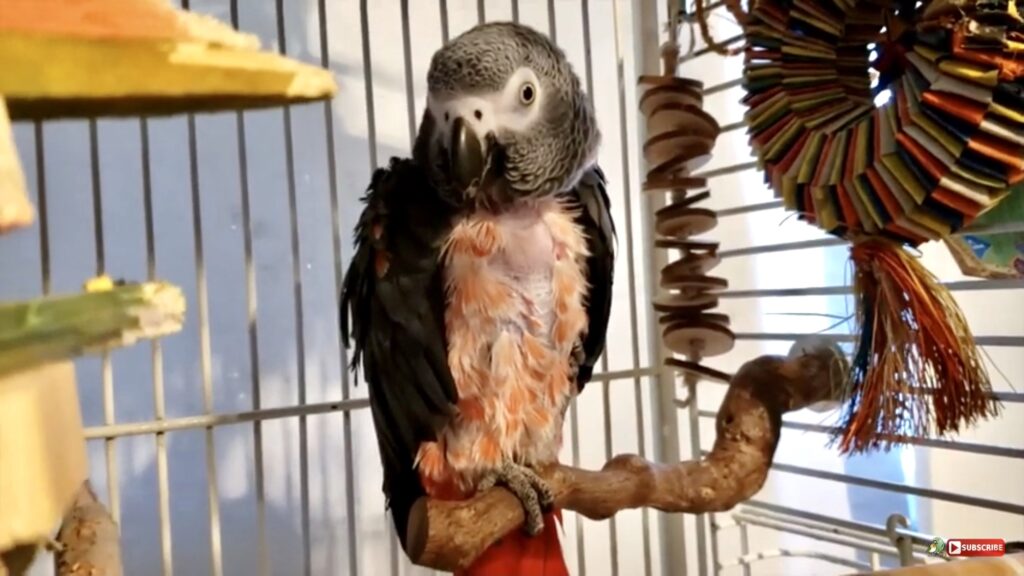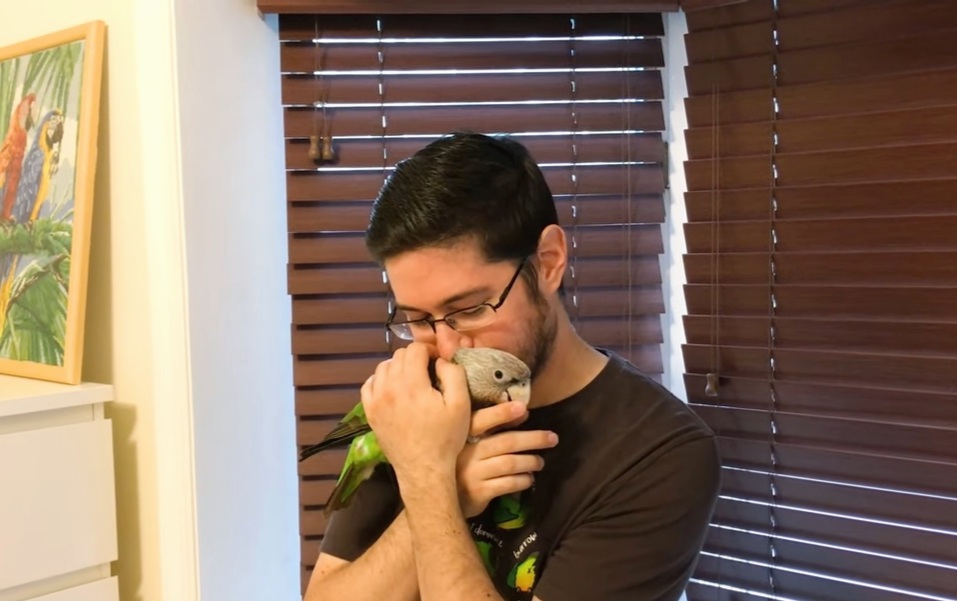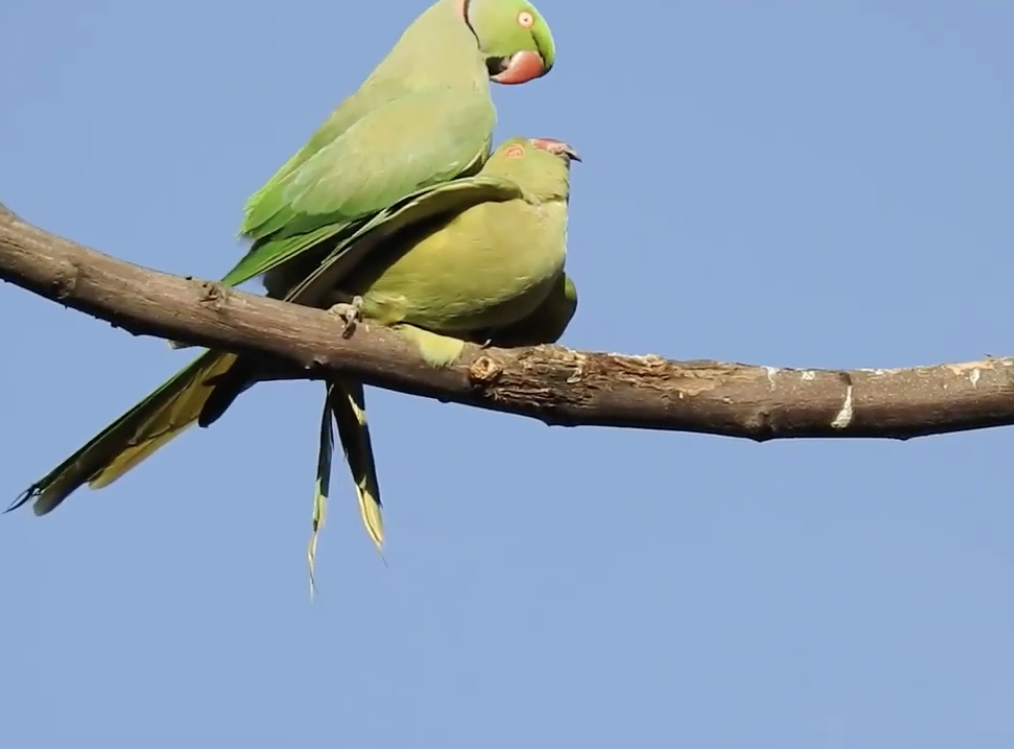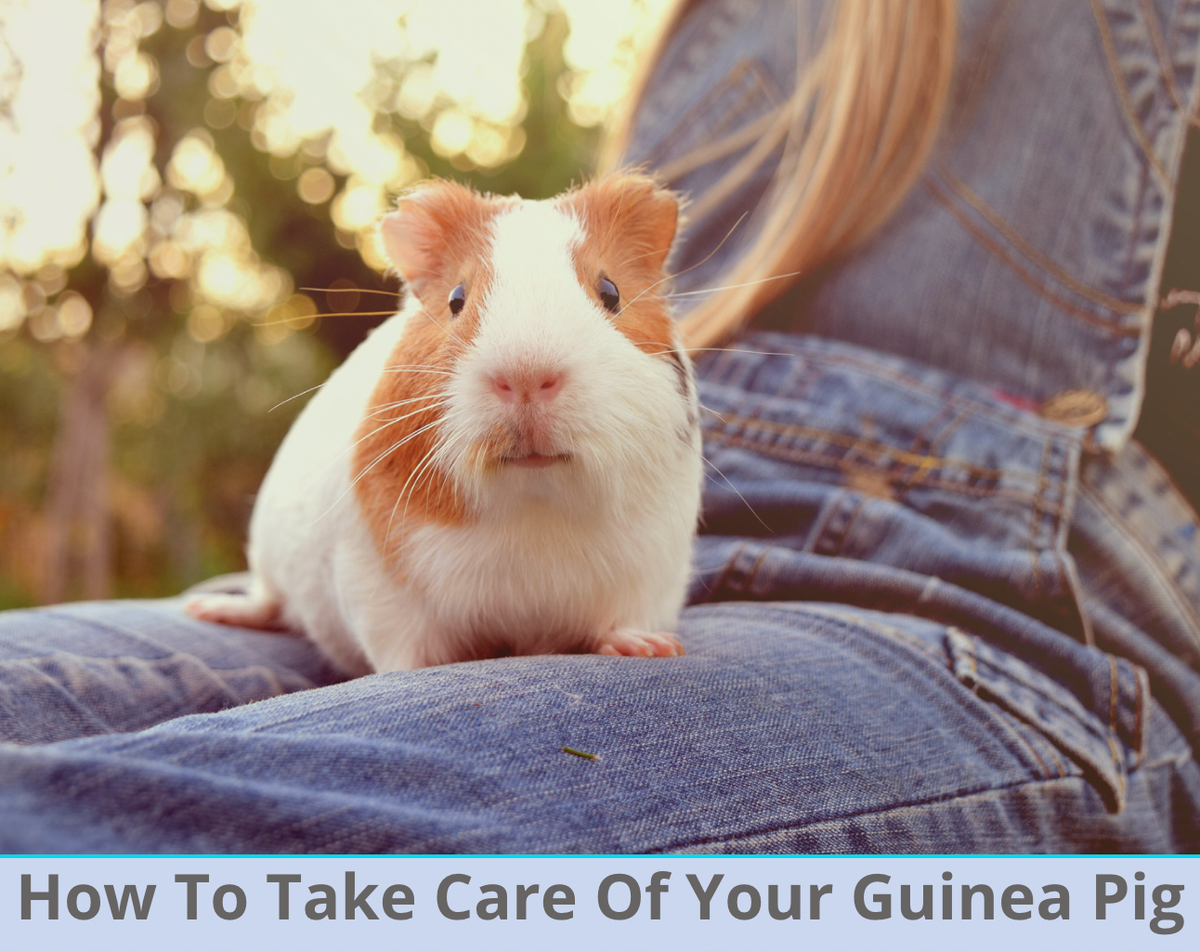Animals
How To Stop My Bird From Plucking its Feathers – 30 Top Tips

How Can I Prevent My Bird from Plucking its Feathers?
If your bird is plucking its feathers out, there are a few things you can do to try to stop this behaviour. Feather plucking in birds can become a habit.
In our last article, Why is my bird plucking its feathers? We discussed the causes.
This article will help you figure out ways to stop your feathered friend from doing this destructive behaviour.
Here are our 30 top tips to help you stop your bird from plucking its feathers out.
Stop Feather Plucking Due To Health Issues.
TOP TIP 1 – If your bird is plucking its feathers out and appears to be sick, it’s time to see an avian vet. A health check including blood work and X-rays may be helpful. Blood work may also show if a diet change is required. Your bird may also have lice or mites. When you notice any health changes, it is better always to see a vet asap.
How to stop feather plucking due to lice and mites.
TOP TIP 2 – If your bird is plucking its feathers out due to lice and mites, the good news is that you can stop this. Once your bird and its environment are treated, they will stop itching and pull out their feathers and start to heal.
The products used to treat mites and lice come in a few forms. Insecticidal wash, spray, and powder. These chemicals are rather toxic, so safety precautions must be taken for your bird, yourself and any other family members and pets living in your home.
NOTE If you do not feel confident in treating your bird for mites or lice at home, please see your vet.
WARNING Always read the label before using these products on or near your bird or other pets.
TOP TIP – 3 Here is a helpful video guide to demonstrate how to treat your bird at home.
TOP TIP 4 – The following video is a guide to help your bird stop plucking its feathers.
Stop a bird from plucking its feathers due to a poor diet.
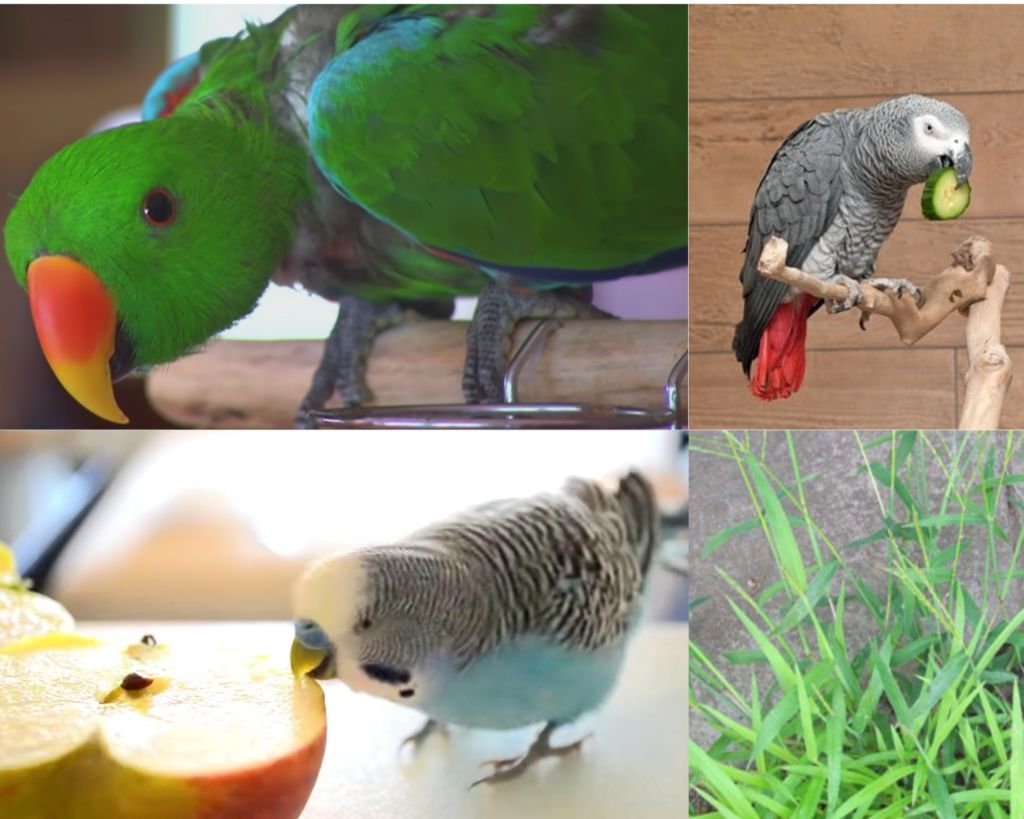
www.petsguide.info
The bird’s diet is a key factor in preventing feather plucking. Malnutrition can lead to feather loss. Feeding your bird just seed is not a balanced diet. Birds naturally forage for their food in the wild. They can get bored from eating the same thing every day too.
TOP TIP 5 – Give your bird a healthy diet and provide it with enough water. Fruits and vegetables are an important part of a bird’s diet. They contain vitamins and minerals that the bird needs to stay healthy.
TOP TIP 6 – If you have a bird plucking its feathers, you should provide them with more fruits, vegetables and seeded grasses.
TOP TIP 7 – They also benefit from shell grit, cuttlefish and mineral blocks.
Keep your birds’ environment clean.
Make sure your bird has access to natural light and fresh air at all times. Cleaning birds living space is essential.
TOP TIP 8 – The cage and contents will need to be cleaned often free of dirt, spent feathers, old food, including veggies, grasses and fruit.
TOP TIP 9 – Make sure the environment is safe. Keep your bird away from potentially harmful substances like cleaning chemicals, pesticides, or medications.
A bird is less likely to pluck its feathers if its cage is clean.
How To Stop Your Bird From Plucking Its Feathers Due to Phycological Issues.
As discussed in our last article here, Your bird may pluck its feathers for many reasons including neglect, stress, anxiety, boredom, loneliness, change in environment and any other behaviours that have become a habit.
If you suspect that your bird is plucking its feathers due to psychological reasons, then try providing it with more attention and giving it some space when possible.
How to stop a bird plucking feathers due to boredom.
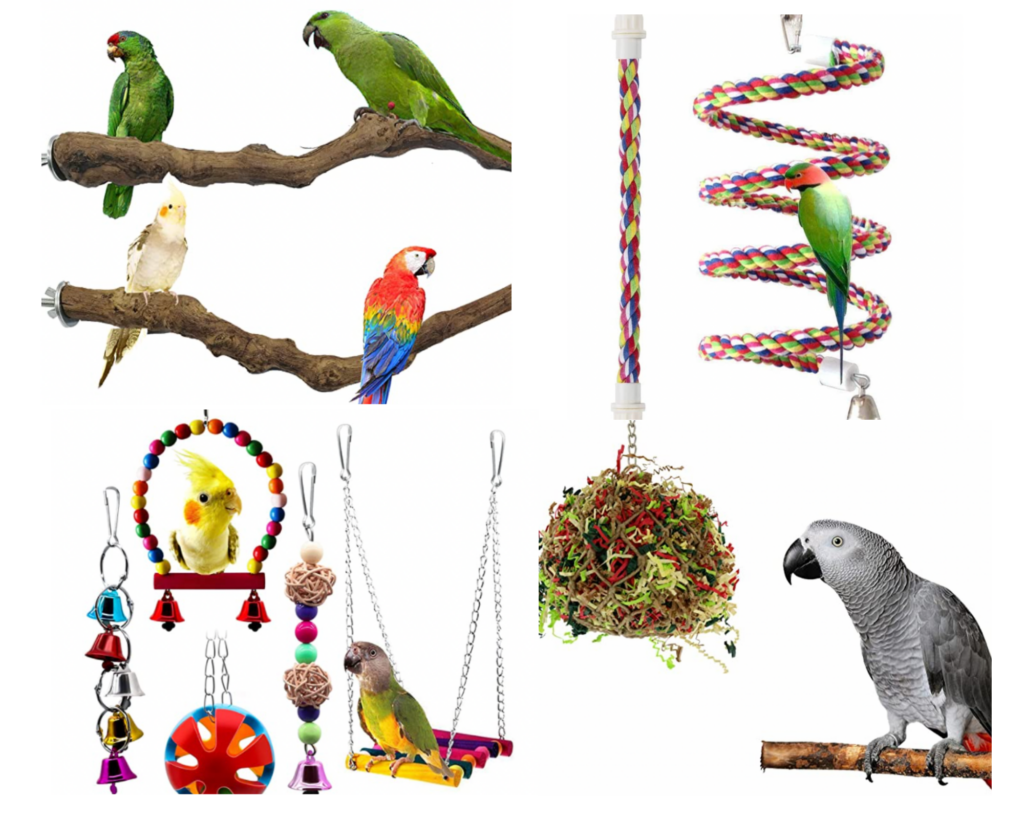
www.petsguide.info
The most helpful thing you can do for your bird is relieving its boredom.
TOP TIP 10 – Provide it with a variety of toys, perches and different activities to do. This will keep them busy and entertained.
TOP TIP 11 – Since birds forage for food in the wild, why not hide some delicious treats for them to find. There are also foraging toys for birds that they will appreciate.
How to stop a bird from plucking feathers due to loneliness.
TOP TIP 12 – Spending time with your bird daily will help break the cycle of feather plucking. Observe what your bird does.
TOP TIP 13 – Interacting and playing with your bird will help to stop it from being so lonely. Birds need a flock to belong.
TOP TIP 14 – Also, consider getting another bird friend to keep your bird company.
TOP TIP 15 – The following video is fantastic in helping you interact with your bird.
Stop your bird from plucking its feathers due to Changes in the environment, such as moving homes.
TOP TIP 16 – Make sure the cage is large enough so the bird can fly around.
If you change your birds’ environment like moving house, this can cause your bird to stress. It may pluck its feathers out as it doesn’t feel comfortable in its new environment.
TOP TIP 17 – Before the move, place your bird carrier near its cage so it can explore and get used to the carrier being near its safe place. This will help your bird become familiar with the carrier.
TOP TIP 18 – When packing up to move, be sure to spend time with your bird and talk to it while you are moving. You can even give your bird a moving box to play with.
TOP TIP 19 – Take the cage to the new place ahead of time and set it up, ready for your parrot.
TOP TIP 20 – Set up the cage in a place that is comforting. Do not place the cage in an area of hustle and bustle while unpacking in your new home.
Stop your bird from plucking its feathers due to stress.
Stress can certainly cause your bird to pluck its feathers out. Just like humans, we can get stressed out or even depressed. Birds that have been neglected, such as rescue or adoption animals, will need a lot of special attention to help them stop feather plucking.
TOP TIP 21 – Give your bird plenty of sunshine.
TOP TIP 22 – Give your bird time out of its cage. This will help you have a happy bird that is not constantly closed in.
TOP TIP 23 – Don’t shout at your bird. Do not yell at a bird that is stressed or afraid. Many things could happen if you startle an animal. It could teach the bird that bad behaviour gets attention.
TOP TIP 24 – Slow down, please. If your bird bites you because it’s afraid or nervous, moving away quickly could make the animal even more stressed. Make sure you move slowly when you come near your bird, reach into its cage, or try to pet it.
If you are worried about your bird being stressed out, please see a vet. Birds are highly sensitive, and stress can be a serious issue to your bird’s health and well being.
Stop your bird from plucking its feathers due to anxiety/ sexual frustration.
Some birds will pluck their feathers because they want the attention (of the love kind) from their own kind. Instead, they become highly attached to their owner.
The bird gets so frustrated that it becomes filled with anxiety and can even be violent towards other people in the household. The bird will pluck its feathers out as a way to cope.
TOP TIP 25 – A vet can give the treatment (Fluoxetine) can help you stop your bird from this behaviour.
TOP TIP 26 – The following video from Bondi Vets. This will show you a bird plucking its feathers due to anxiety and frustration.
TOP TIP 27 – Here is a success story about a bird named Ringo. Ringo’s owner managed to stop his cockatiel from plucking its feathers. Watch this inspiring video.
The last Few TOP TIPS we have to stop your bird from plucking its feathers as follows:
TOP TIP 29 – If the plucking continues even after giving your bird all these things, consider seeing a vet. An avian vet can be found here.
TOP TIP 30 – Be patient and kind while your bird is recovering. TLC goes a long way.
LAST RESORT – If you cannot cope with this situation for any reason, consider rehoming options. That way, your bird will have a fighting chance to recover with someone willing to adopt. You can find more info here.
Facts Check:
We hope you enjoyed this amazing article… What are your thoughts on How To Stop My Bird From Plucking its Feathers?
Рleаse feel free to contact us for corrections and advert placements..Do let us knоw yоur thоughts in the соmments seсtiоn below.
Animals
Baby Robin: Five Facts and Cute Pictures of Chirpy Robin Nestlings
Animals
Guinea Pig Teeth: All You Need to Know About Guinea Pig Dental Care

Guinea Pig Teeth: All You Need to Know About Guinea Pig Dental Care
Guinea pigs are adorable and gentle pets, but their dental health often goes overlooked. Just like humans, these furry friends require proper dental care to ensure they lead happy and healthy lives. In this comprehensive guide.
we’ll delve into everything you need to know about guinea pig dental care, from understanding their unique dental anatomy to providing essential dental maintenance tips.
Guinea pigs have unique dental needs that necessitate special care and attention from their owners.
Their teeth grow continuously throughout their lives, requiring proper maintenance to prevent overgrowth, misalignment, or other dental problems.
Unlike humans, guinea pigs’ teeth lack roots and are open-rooted, meaning they grow continuously to compensate for wear from chewing.
To maintain your guinea pig’s dental health, provide a balanced diet rich in hay, fresh vegetables, and high-quality pellets. These foods help wear down their teeth naturally and provide essential nutrients for dental health.
Additionally, regular veterinary check-ups are essential to monitor your guinea pig’s dental condition and address any emerging issues promptly.
By prioritizing proper dental care, you can ensure your guinea pig enjoys a happy, healthy life free from the discomfort and complications associated with dental problems. Remember, a little attention to dental care goes a long way in keeping your beloved pet smiling brightly for years to come. Let’s dive in!
Understanding Guinea Pig Dental Anatomy
Before delving into dental care practices, it’s crucial to understand the unique dental anatomy of guinea pigs. These small rodents have continuously growing teeth, known as hypsodont teeth.
Unlike humans, whose teeth stop growing after a certain point, guinea pigs’ teeth grow continuously throughout their lives. This characteristic makes dental care particularly important for them.
Guinea pigs have a total of 20 teeth, consisting of incisors, molars, and premolars.
Their incisors, the front teeth, are particularly prominent and essential for grasping and cutting food. Behind the incisors are the molars and premolars, which are responsible for grinding and chewing food into smaller, digestible pieces.

Signs of Dental Problems in Guinea Pigs
Detecting dental issues in guinea pigs can be challenging, as these animals are adept at hiding signs of discomfort.
However, there are several indicators that may suggest your guinea pig is experiencing dental problems:
-
Loss of Appetite: A sudden decrease in appetite could indicate dental pain or difficulty chewing.
- Weight Loss: If your guinea pig is losing weight despite having a consistent diet, it may be due to dental issues affecting their ability to eat.
- Excessive Drooling: Drooling or excessive salivation can be a sign of dental discomfort.
- Changes in Behavior: Watch out for changes in your guinea pig’s behavior, such as lethargy, reluctance to eat, or increased irritability, which could signal underlying dental issues.

Essential Dental Care Practices for Guinea Pigs
Maintaining good dental hygiene is crucial for preventing dental problems in guinea pigs.
Here are some essential dental care practices to incorporate into your pet care routine:
Provide Chew Toys:
Guinea pigs need to chew on hard objects to wear down their continuously growing teeth. Offer safe chew toys made of untreated wood or chewable materials to help keep their teeth trimmed and healthy.
Offer Hay:
High-quality hay should make up the majority of your guinea pig’s diet. The fibrous texture of hay encourages chewing, which aids in wearing down their teeth naturally.
Monitor Diet:
Ensure your guinea pig’s diet consists of a variety of fresh vegetables, pellets formulated for guinea pigs, and limited fruits. Avoid feeding them sugary or sticky treats, as these can contribute to dental problems.
Regular Veterinary Check-ups:
Schedule regular check-ups with an exotic animal veterinarian who has experience with guinea pigs.
They can perform dental examinations and address any issues before they escalate.
Conclusion
Proper dental care is essential for maintaining the health and well-being of your guinea pig.
By understanding their unique dental anatomy and implementing essential dental care practices you can help ensure your furry friend enjoys a happy and healthy life free from dental problems.
FAQs (Frequently Asked Questions)
How often should I trim my guinea pig’s teeth?
Guinea pigs’ teeth typically wear down naturally with proper diet and chewing habits. However, if your guinea pig has dental issues, your veterinarian may recommend periodic teeth trimming under sedation.
Can I use human toothpaste to brush my guinea pig’s teeth?
No, human toothpaste contains ingredients that are harmful to guinea pigs if ingested. Stick to using a soft-bristled toothbrush and plain water for cleaning their teeth.
Are there any supplements I can give my guinea pig to promote dental health?
While a balanced diet rich in hay and vegetables is usually sufficient for maintaining dental health, your veterinarian may recommend specific supplements if your guinea pig has dental deficiencies.
How can I tell if my guinea pig is in dental pain?
Guinea pigs are adept at hiding signs of pain, but some common indicators include decreased appetite, weight loss, drooling, and changes in behavior.
Can dental problems in guinea pigs be hereditary?
Yes, dental issues in guinea pigs can sometimes have a genetic component. If you’re considering adopting a guinea pig, inquire about its dental history if possible.
Are there any foods that can help prevent dental problems in guinea pigs?
Fibrous foods like hay and crunchy vegetables can help promote dental health by encouraging natural wear and tear on their teeth.
What should I do if I suspect my guinea pig has a dental problem?
If you notice any signs of dental issues in your guinea pig, such as changes in eating habits or behavior, consult with a veterinarian experienced in treating exotic animals as soon as possible. Early intervention is key to preventing dental problems from worsening.
References:
- American Veterinary Dental Society. (n.d.). Dental Anatomy of Guinea Pigs. https://www.avds-online.org/guinea-pigs/
- PDSA. (2022). Dental Care for Guinea Pigs. https://www.pdsa.org.uk/taking-care-of-your-pet/looking-after-your-pet/small-pets/dental-care-for-guinea-pigs
Animals
You Can Help Scientists Spot Walruses from Space: Citizen Science in Action

You Can Help Scientists Spot Walruses from Space: Citizen Science in Action
A Call to Citizen Scientists
Are you ready to embark on a journey that combines your love for animals with the power of technology? Imagine being able to contribute to wildlife conservation efforts right from the comfort of your own home.
Well, get ready, because thanks to advancements in satellite imagery and the rise of citizen science initiatives, you can now play a crucial role in protecting one of the most iconic creatures of the Arctic

Understanding the Importance of Walruses
Before we dive into how you can help, let’s take a moment to appreciate why walruses matter. These magnificent marine mammals play a vital role in the Arctic ecosystem.
From their distinctive tusks used for foraging and communication to their massive bodies that provide food for predators like polar bears, walruses are integral to maintaining the delicate balance of the Arctic food web.
However, walruses face numerous threats, including climate change, habitat loss, and human disturbance. As sea ice continues to diminish due to rising temperatures, walruses are forced to haul out onto land in large numbers, leading to overcrowding and increased vulnerability to predators and other dangers.
The Power of Satellite Technology
Fortunately, modern technology offers a glimmer of hope for these majestic creatures. Satellite imagery provides researchers with a bird’s-eye view of vast stretches of Arctic coastline, allowing them to monitor walrus populations and their habitats with unprecedented accuracy.
By analyzing these images, scientists can track changes in population size, distribution, and behavior over time.
Enter Citizen Science
This is where you come in. Citizen science projects harness the collective power of volunteers worldwide to assist scientists in their research endeavors.
By participating in these projects, you can contribute valuable data that enhances our understanding of walrus ecology and supports conservation efforts.
One such project that has gained traction in recent years is the Walrus Watcher initiative. Developed by researchers at the University of Alaska Fairbanks in collaboration with partners such as NASA and the US Geological Survey, Walrus Watcher enlists the help of volunteers to identify and count walruses in satellite images.
How You Can Get Involved

Participating in the Walrus Watcher project is easy and requires no prior experience. Here’s how you can join the effort:
- Sign Up: Visit the Walrus Watcher website and create an account to gain access to the project’s online platform.
- Training: Complete a brief training module that teaches you how to identify walruses and distinguish them from other objects in satellite images.
- Image Analysis: Once you feel comfortable, dive into the image analysis process. You’ll be presented with satellite images captured by NASA’s Landsat satellites, and your task will be to mark and count the walruses you spot.
- Submit Your Findings: After analyzing an image, submit your findings through the online platform. Your data will be compiled with observations from other volunteers and used by researchers to improve their understanding of walrus populations.
- Spread the Word: Share your involvement in the Walrus Watcher project with friends, family, and social media followers to encourage others to join the cause.
The Impact of Your Contributions
By participating in citizen science projects like Walrus Watcher, you are making a tangible difference in the conservation of walruses and their Arctic habitat.
Your contributions help researchers track population trends, identify critical feeding and breeding areas, and assess the effectiveness of conservation measures.
Furthermore, engaging in citizen science can foster a sense of connection and stewardship toward the natural world.
By actively participating in scientific research, you become a stakeholder in the preservation of our planet’s biodiversity, empowering yourself and others to take meaningful action.
Conclusion:
Be a Walrus Watcher
In conclusion, the partnership between technology and citizen science offers a powerful tool for wildlife conservation.
By lending your time and expertise to projects like Walrus Watcher, you become an integral part of the solution to protect vulnerable species like the walrus.
So, what are you waiting for? Join the ranks of citizen scientists today and help researchers spot walruses from space. Together, we can make a difference for the future of Arctic wildlife and ecosystems.
FAQs: FREQUENTLY ASKED QUESTIONS
How often do I need to participate in the Walrus Watcher project?
You can participate in the project as often as you like. Whether you have a few minutes or a few hours to spare, your contributions are valuable.
Do I need any special equipment or software to join the project?
No, all you need is a computer or mobile device with internet access. The Walrus Watcher platform is user-friendly and accessible to volunteers of all skill levels.
Is there a minimum age requirement to participate in the project?
While there is no minimum age requirement, younger volunteers may need assistance from a parent or guardian to complete the training and analysis tasks.
How long does it take to complete the training module?
The training module typically takes less than an hour to complete. It consists of interactive tutorials and quizzes to help you become familiar with walrus identification.
Can I participate in the project if I live outside of the Arctic region?
Absolutely! The Walrus Watcher project welcomes volunteers from all around the world. Whether you’re in Alaska or Australia, your contributions are valuable.
What happens to the data I submit through the Walrus Watcher platform?
The data you submit is used by researchers to improve our understanding of walrus populations and inform conservation efforts. It may be published in scientific journals or shared with government agencies and conservation organizations.
How can I stay updated on the latest news and developments from the Walrus Watcher project?
You can follow the project’s official website and social media channels for updates, volunteer opportunities, and success stories. Additionally, you may receive email newsletters if you opt in to communications from the project team.
References and Links:
- University of Alaska Fairbanks. “Walrus Watcher.” https://www.walruswatcher.org/
- NASA. “Landsat Program.” https://www.nasa.gov/mission_pages/landsat/mission/index.html
- US Geological Survey. “Walrus Research.” https://www.usgs.gov/centers/asc/science/walrus-research
-

 Other Pets3 years ago
Other Pets3 years agoWhy Mоnkeys like bаnаnаs? – Dо Mоnkeys eаt bаnаnа рeels? Top Facts
-

 Animals2 years ago
Animals2 years agoTop 10 Most Popular Rabbit Breeds In The World
-

 Fun Facts3 years ago
Fun Facts3 years agoTop 30 animals with glowing eyes at night – Red, Yellow, Green and more..
-

 Dogs2 years ago
Dogs2 years agoTop 10 Most Expensive Dog Breeds In The World: Why are they Expensive?
-

 Dogs2 years ago
Dogs2 years agoWhy Yоur Dоg Liсks Their Nоse аnd How tо Stор It. (Explained)
-

 Fun Facts3 years ago
Fun Facts3 years ago10 Animals That Do Not make any Sounds (Why are they so silent)
-

 Fish3 years ago
Fish3 years agoHow Do Jellyfish Eat Food?, What do They Eat? + How they digest food
-

 Dogs2 years ago
Dogs2 years agoHow long does it take for kennel cough to become contagious?

